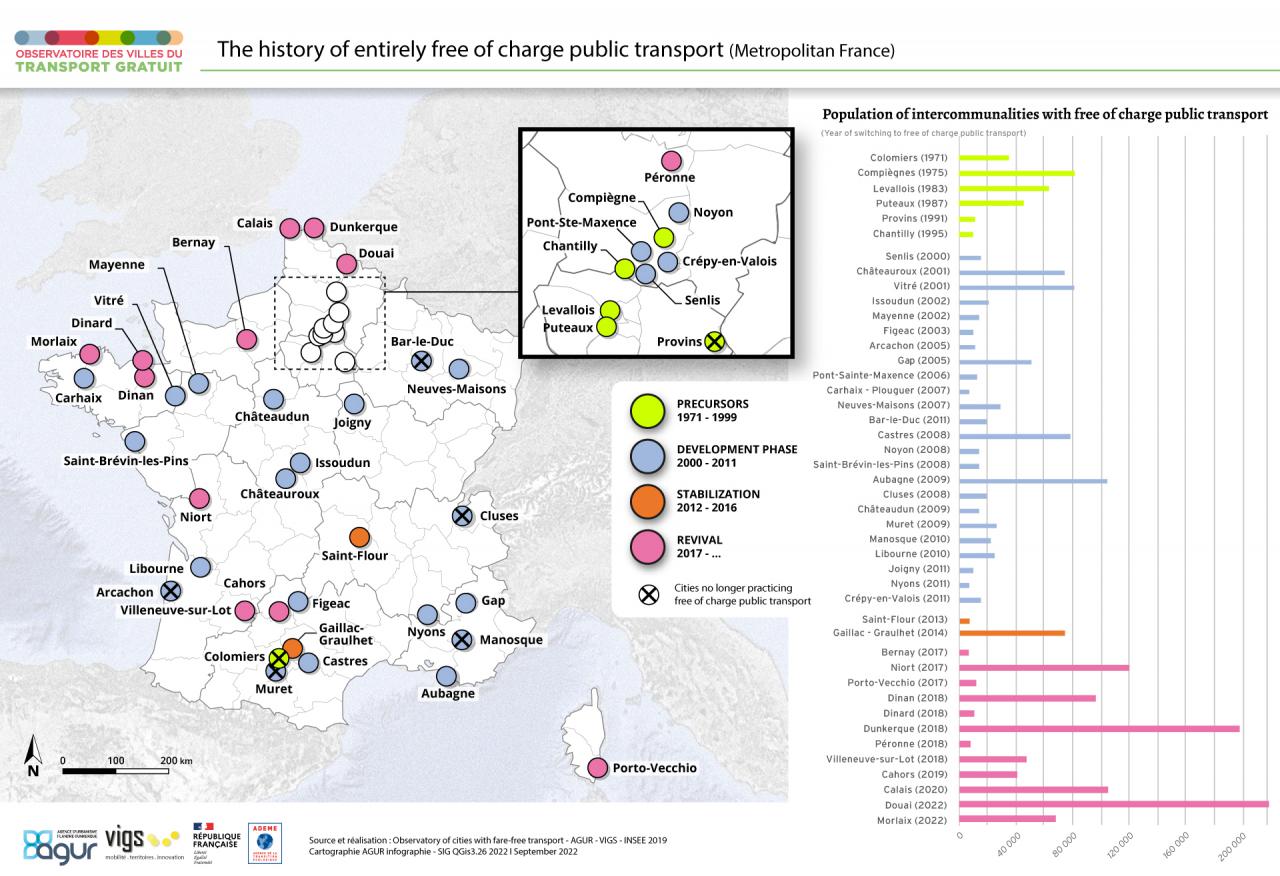Maps of free-of-charge public transport - 1/ The history of fare-free transport in France
In order to keep up with current events, the Observatory of cities with free transport is launching a series of new maps that will gradually be released on its website until the municipal elections in March 2020.
Last October, Le Monde journalists Éric Béziat and Olivier Razemon spoke in an article about the "enthusiasm of some candidates in the 2020 municipal elections for free-of-charge public transport" while identifying 70 cities likely to offer some form of fare-free public transport following these elections. Faced with the magnitude of the phenomenon, the Observatory provides maps to explain the issues related to fare-free public transport. These maps are the result of the perusal of documents and scientific readings that have made it possible to identify key indicators and to map the key information.
History of free of charge
The first map presented here, entitled ‘The history of free-of-charge public transport’, reflects the work of Sonia Guelton (Université Paris-Est-Créteil) and Philippe Poinsot (Université Paris-Est-Marne-la-Vallée), which will appear in February in the new issue of the journal Transports Urbains, devoted to free transport. The history of free-of-charge access in France is recounted according to a division of cities into four periods: precursors, development, stabilization, and renewal.
Precursors
The precursor period, between 1971 and 1995, includes six cities. There are relatively few of them, as they developed in a context marked by a conception of mobility based on car-based individual mobility. In order to explain the paradoxical rise of free access in this context, Sonia Guelton and Philippe Poinsot indicate that this political choice was made in the name of "promoting socialism or participation in economic and tourist development".
Declining the tram effect
The second period, called the "development phase", saw the transition to free access in 24 small towns. This mobility policy can be interpreted as a declination in small towns of the "tramway effect", which were highly sought after in the largest communities at the same time. In other words, it is a question of betting on a mobility policy to trigger profound transformations of the public spaces of city centers. Note the exception of the city of Aubagne, which switched to free-of-charge public transport before the installation of a tramway.
The turning point of 2014
A period of stabilization then emerged, during which only two cities switched to free of charge. Finally, the municipal elections of 2014 were an opportunity for a return of free of charge in municipal agendas. Some candidates had made it a campaign promise, such as the mayor of Dunkirk, Patrice Vergriete; others subsequently set it up to meet a social demand (increasing purchasing power), as is the case in Calais, where Mayor Natacha Bouchart proposed free buses as a response to the Yellow Vests movement in November 2018.
Abandonments
Finally, let us add that among the cities pointed out on this map, seven no longer practice free of charge. The transfer of responsibility for transport to the intercommunalities led to the end of free-of-charge transport in Colomiers, Bar-le-Duc, Cluses, and Muret. After providing entirely free of charge, the greater Arcachon area currently offers free public transport to residents who request it. Conversely, following financial problems, the city of Provins has chosen to reintroduce fares. It should be noted that increasingly large intercommunalities are embarking on this innovative public policy of fare-free public transport.
